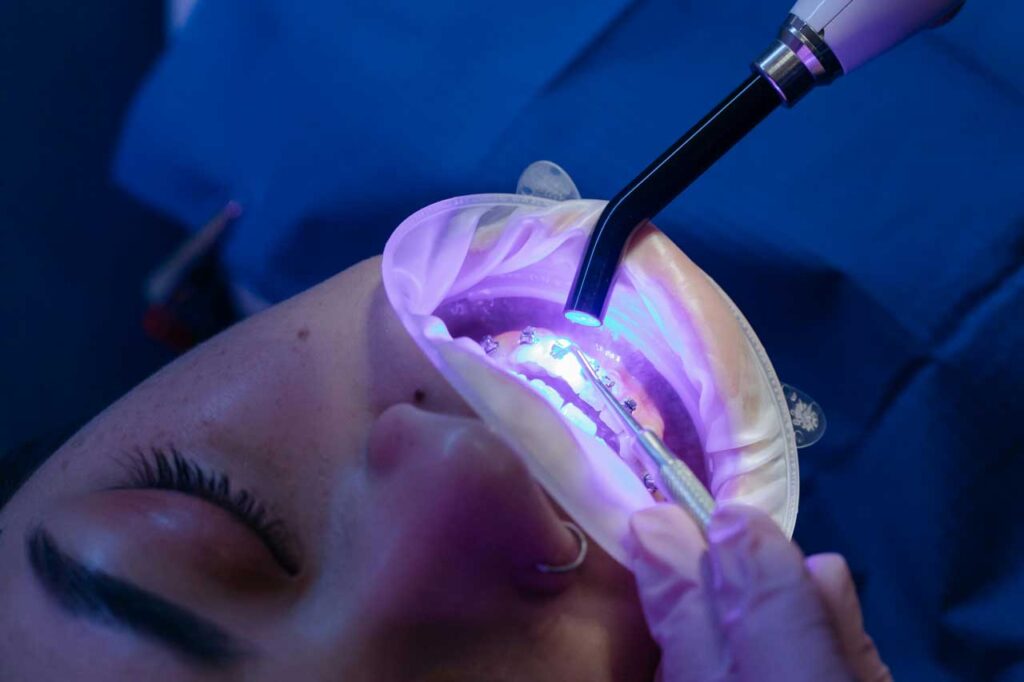
A straight, beautiful smile is more than just aesthetically pleasing—it plays a significant role in oral health and overall confidence. With advancements in orthodontics, individuals now have multiple options to achieve aligned teeth, the most popular being traditional braces and Invisalign. Choosing the right option depends on factors such as dental needs, lifestyle, and budget.
This comprehensive guide will explore the differences, benefits, and considerations of braces versus Invisalign to help you make an informed decision.
Looking for expert orthodontic care? Visit 32 Dental Care for a personalized consultation!
What Are Braces and Invisalign?
Braces
Traditional braces consist of metal brackets attached to the teeth and connected by wires and elastics. Over time, the wires are adjusted to gradually shift teeth into proper alignment.
Types of Braces
- Metal Braces: Durable and effective for all types of alignment issues.
- Ceramic Braces: Tooth-colored brackets for a less noticeable look.
- Lingual Braces: Placed behind the teeth for a hidden appearance.
Invisalign
Invisalign uses clear, removable aligners made from medical-grade plastic. These aligners are custom-made for each patient and work by gently moving teeth into alignment over time.
How Do Braces and Invisalign Work?
Both braces and Invisalign correct misaligned teeth by applying controlled pressure over time, but their mechanisms differ.
Braces
- Brackets are bonded to teeth and connected by wires.
- Adjustments tighten the wires to shift teeth gradually.
- Effective for correcting complex dental issues like severe crowding or bite problems.
Invisalign
- Patients wear a series of clear aligners that are replaced every 1–2 weeks.
- Each set of aligners is designed to move teeth slightly closer to the desired position.
- Suitable for mild to moderate alignment issues.
Unsure about your dental alignment needs? Schedule an assessment at 32 Dental Care
Pros and Cons of Braces
Pros
- Effective for Complex Issues: Braces can address severe alignment and bite problems.
- No Need for Discipline: Braces remain fixed, ensuring continuous treatment.
- Variety of Options: Ceramic and lingual braces provide aesthetic alternatives.
Cons
- Appearance: Metal braces are highly visible, which may affect self-confidence.
- Discomfort: Brackets and wires can irritate the mouth.
- Dietary Restrictions: Sticky and hard foods must be avoided.
- Longer Treatment Time: Braces typically require 1–3 years of wear.
Pros and Cons of Invisalign
Pros
- Aesthetic Appeal: Clear aligners are virtually invisible.
- Removability: Aligners can be removed for eating, brushing, and special occasions.
- Comfort: Smooth plastic reduces irritation to gums and cheeks.
- Fewer Dietary Restrictions: Patients can eat whatever they like.
Cons
- Requires Discipline: Aligners must be worn 20–22 hours daily for effectiveness.
- Limited for Complex Cases: Not ideal for severe alignment or bite issues.
- Cost: Invisalign is often more expensive than traditional braces.
- Frequent Replacement: Losing or damaging aligners can delay treatment.
Comparing Braces and Invisalign
- Appearance
-
-
- Braces: Visible brackets and wires can be distracting.
- Invisalign: Transparent aligners are discreet and appealing.
-
- Comfort
-
- Braces: Brackets may cause irritation; adjustments can be painful.
- Invisalign: Smooth edges offer more comfort, though initial wear may feel tight.
- Convenience
-
- Braces: Require regular adjustments by an orthodontist.
- Invisalign: Allows fewer office visits as new aligners are provided in advance.
- Maintenance
-
- Braces: Special tools are needed for cleaning around brackets and wires.
- Invisalign: Aligners are removed for cleaning, making oral hygiene easier.
- Treatment Time
-
- Braces: 18–36 months on average, depending on the complexity.
- Invisalign: 6–18 months for most cases.
Cost Comparison
Braces
- Average cost: $3,000–$7,000.
- May include additional expenses for repairs or adjustments.
Invisalign
- Average cost: $4,000–$8,000.
- Typically includes the entire series of aligners but may charge extra for replacements.
Who Should Choose Braces?
Braces are ideal for:
- Patients with severe crowding or misalignment.
- Individuals with complex bite issues such as overbite, underbite, or crossbite.
- Patients who may not consistently wear removable aligners.
- Those seeking a long-term, effective solution.
Who Should Choose Invisalign?
Invisalign is best suited for:
- Adults and teens who value a discreet treatment.
- Those with mild to moderate alignment issues.
- Patients with busy lifestyles who want fewer orthodontic appointments.
- Individuals seeking a more comfortable alternative to braces.
Living with Braces and Invisalign
Daily Care for Braces
- Brush thoroughly around brackets and wires twice daily.
- Use floss threaders or water flossers for hard-to-reach areas.
- Avoid sticky, hard, or crunchy foods that can damage braces.
Daily Care for Invisalign
- Remove aligners before eating or drinking anything other than water.
- Brush aligners gently with a soft toothbrush and rinse with lukewarm water.
- Store aligners in a protective case when not in use.
FAQs About Braces and Invisalign
- Do braces or Invisalign hurt?
-
- Both options can cause discomfort initially or after adjustments, but Invisalign is generally less painful.
- How often do I need to visit the orthodontist?
-
- Braces: Every 4–8 weeks for adjustments.
- Invisalign: Every 6–10 weeks to monitor progress.
- Can I switch from braces to Invisalign?
-
- In some cases, patients can transition to Invisalign after initial correction with braces.
- Is Invisalign suitable for children?
-
- Invisalign Teen is designed for adolescents but may not be suitable for young children.
The Role of Technology in Orthodontics
Modern advancements like 3D imaging and computer-aided design (CAD) have revolutionized orthodontics. Invisalign leverages these technologies to create precise aligners, while braces benefit from improved materials and customization.
Final Thoughts: Which Option Is Right for You?
The choice between braces and Invisalign ultimately depends on your specific dental needs, lifestyle, and budget. Both options have their unique advantages and limitations, so it’s essential to consult an experienced orthodontist.
Ready to start your smile transformation? Visit Our Clinic to schedule your consultation and explore your orthodontic options today!



